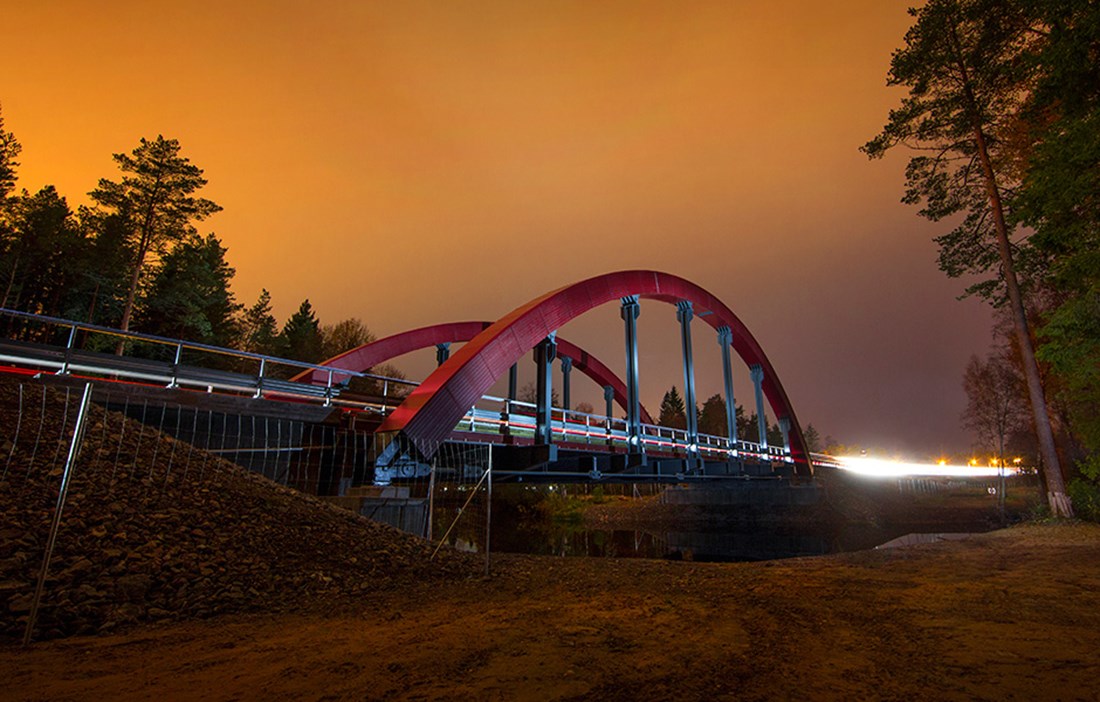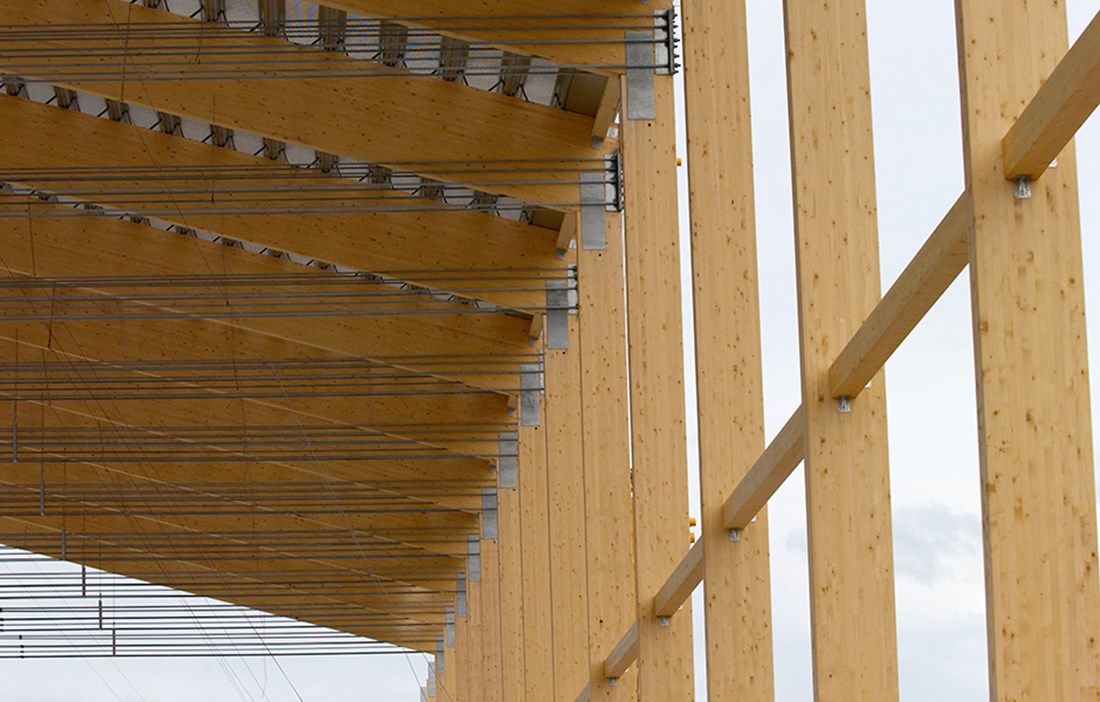THE SECRET BEHIND glulam is as simple as it is ingenious. It boils down to strength-graded timber and boards that are finger-jointed together into long laminates. These are planed, glued, assembled and forced together under high pressure to make beams of the required dimensions. The result is nature’s answer to steel and concrete, but significantly stronger in relation to its weight. The material is ideal for load-bearing structures of every kind, and particularly suitable for buildings with large spans.
For Arne Emilsson, structural engineer and founder of the company Limträteknik in Falun and Malmö, glulam is part of everyday life. The company plans a significant number of the larger wood construction projects in Sweden, and works closely with most manufacturers of engineered materials on development and research. Arne acknowledges the upward trend for the use of glulam and describes some of the reasons why the material is used for certain types of structure.
“Glulam clearly has a number of attractive properties. Many people appreciate its light weight, which means it doesn’t need any advanced foundation work. It is both formable and dimensionally stable, and it’s easy to work with and adjust on site. Glulam also has fire safety advantages and is both eco-friendly and climate-smart. In addition, it can buffer moisture and contribute to a pleasant indoor climate. From an architectural point of view, it is aesthetically attractive either alone or combined with other materials.”
Swedish glulam is manufactured in line with the harmonised standard SS-EN 14080:2013. To show that glulam products meet the requirements contained in SS-EN 14080:2013, they must be CE marked and have a performance declaration. The standard states which documents are required for verification. Elements (irrespective of the number of laminates) manufactured in Sweden are assigned the strength class GL30c or GL30h, while split glulam beams have a strength class of GL28cs or GL28hs. The letter c stands for combined, h for homogeneous, and s for split.
ARCHITECT ANNA DAVIS is Creative Director at Utopia Arkitekter and shoulders responsibility for developing the practice’s working methods and creative team. Using glulam as a construction material is a ‘no-brainer’ for her, and she relates that the material often wins out over steel when it comes to large spans.
“The fact that glulam is so adaptable is a huge advantage. Last winter, for example, I was involved in designing an industrial building that would be rented out to several different types of business. We chose to build both the primary and secondary structure in glulam, allowing easy adaptation of the secondary structure to whichever tenant chose to move in. Glulam also feels appropriate from a fire safety perspective, since it burns slowly and gains natural protection as it chars.”
Anna has noticed the way glulam construction has taken off in Sweden, but feels we ought to be able to take it much further. She advocates closer collaboration between architects, structural engineers and manufacturers, in order to adapt production.
“Could we perhaps make specialist glue laminations and whole structural joints directly in the factory or out at the construction site? Once that is possible, I believe we can pare things down to more slender structures and avoid over-sizing. In the end, architects and manufacturers have to come together with some sort of humility and see what is possible, from a cost and manufacturing perspective.”
Text: Katarina Brandt























